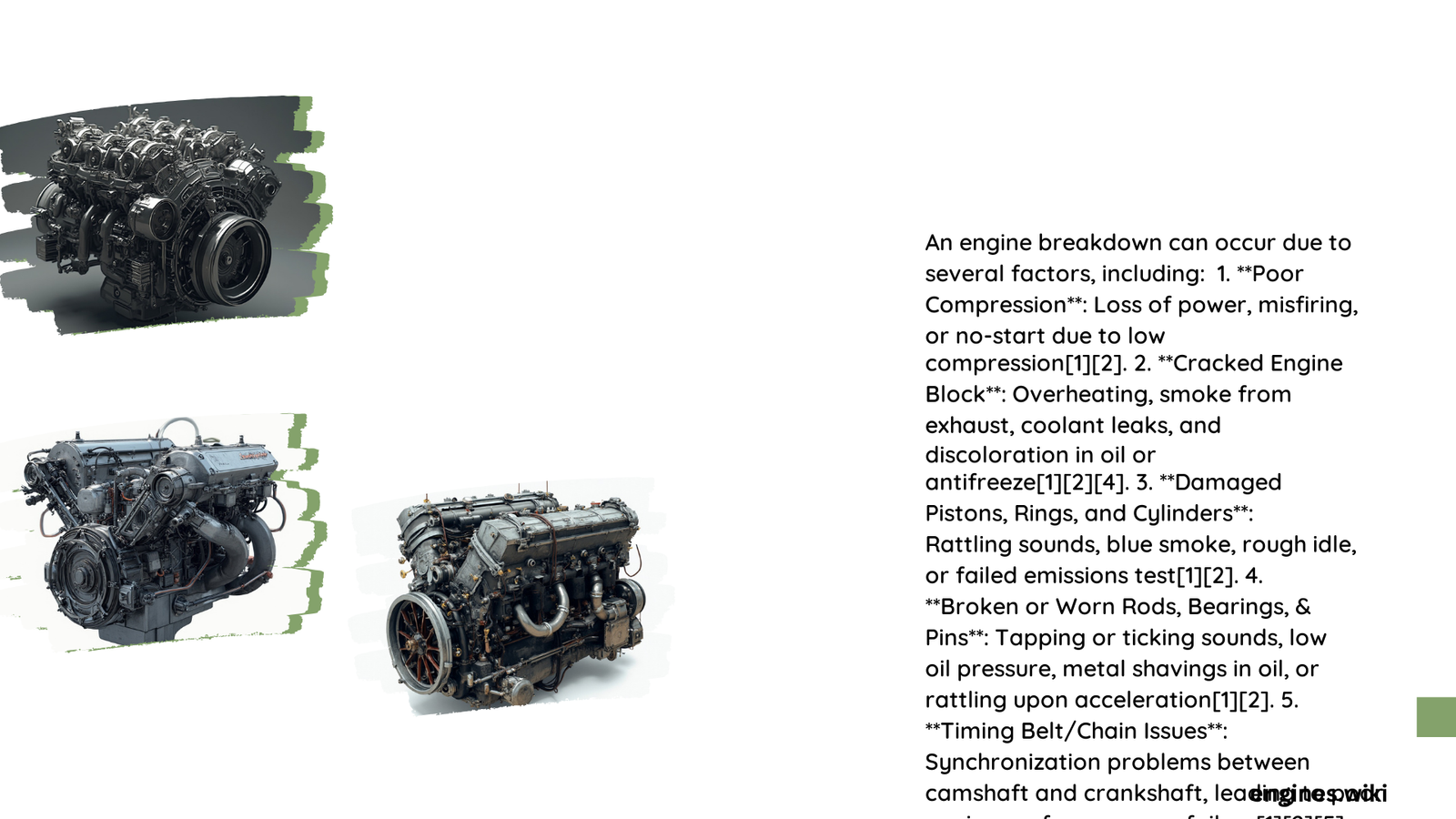Engine breakdown is a critical issue that can leave drivers stranded and facing expensive repairs. It occurs when a vehicle’s engine fails to function properly or stops working altogether. Common causes include overheating, lack of oil, and mechanical failures. Symptoms often include warning lights, unusual noises, and performance issues. Understanding the causes, recognizing the symptoms, and knowing how to respond can help prevent catastrophic engine failure and minimize repair costs.
What Are the Top Causes of Engine Breakdown?
Engine breakdowns can occur due to various factors, but some causes are more common than others. Here are the top five specific causes of engine breakdown in vehicles:
-
Engine Overheating: This is one of the most frequent causes of major engine damage. It can result from failures in the cooling system, such as a malfunctioning thermostat, radiator, or water pump. If the temperature gauge enters the red zone, significant engine damage can occur within minutes.
-
Lack of Oil or Oil Breakdown: Running an engine without sufficient oil or with degraded oil can lead to severe damage. Just a few minutes of operation without adequate oil can cause the engine to seize up entirely.
-
Engine Misfire: Misfires can occur due to issues with engine timing, spark ignition, or air/fuel ratio. This can lead to explosions outside the combustion cylinders, causing damage to the engine.
-
Hydrolocked Engine: Driving through deep water can cause water to enter the engine, leading to hydrolocking. This is particularly risky for modern cars with low intake and exhaust ports.
-
Seal and Gasket Damage: Failures in seals and gaskets, such as a leaking cylinder head gasket, can cause major engine damage. Proper maintenance of the cooling system can help prevent these issues.
What Are the Most Common Symptoms of Engine Breakdown?

Recognizing the symptoms of an impending engine breakdown can help you take action before catastrophic failure occurs. Here are the most common signs to watch for:
-
Temperature Gauge: If the temperature gauge goes into the red, it indicates overheating. Immediate action is necessary to prevent damage.
-
Warning Lights: The temperature warning light or charging warning light can indicate issues such as overheating or alternator faults.
-
Noises and Vibrations:
- Metallic grinding noises or a squealing sound under the hood can indicate starter motor failure or alternator issues.
-
A vibration through the steering wheel can indicate steering, suspension, or brake problems.
-
Performance Issues: Misfires can cause rough running, especially when accelerating or driving uphill. This can also lead to difficulty starting the engine, especially in damp weather.
-
Fluid Leaks: Pools of fluid collecting under the car can indicate coolant leaks or other fluid-related issues.
How Much Does It Cost to Repair an Engine Breakdown?
The cost of repairing an engine breakdown can vary widely depending on the cause and extent of the damage. Here’s a breakdown of average repair costs for various types of engine issues:
| Issue | Estimated Cost Range |
|---|---|
| Engine Overheating | $300 – $2,000 |
| Lack of Oil or Oil Breakdown | $3,000 – $10,000+ |
| Engine Misfire | $100 – $2,000 |
| Hydrolocked Engine | $3,000 – $10,000+ |
| Seal and Gasket Damage | $1,000 – $3,000+ |
It’s important to note that these are general estimates, and actual costs can vary based on the specific vehicle make and model, as well as labor rates in different regions.
How Are Engine Breakdowns Diagnosed?
Diagnosing an engine breakdown involves a combination of visual inspection, electronic diagnostics, and mechanical tests. Here’s an overview of the diagnostic process:
-
Visual Inspection: Mechanics will first look for obvious signs of damage or wear, such as fluid leaks, damaged belts, or corroded battery terminals.
-
Electronic Diagnostics: An OBD-II scanner is used to read error codes from the vehicle’s onboard computer (ECU). This can quickly identify many issues and typically takes 15-30 minutes.
-
Mechanical Tests:
- Compression tests check the pressure in each cylinder to ensure proper sealing.
- Leak-down tests help identify internal engine leaks.
-
These tests can take several hours but provide accurate information about internal engine conditions.
-
Electrical System Checks: A multimeter is used to check the battery, alternator, and other electrical components.
The accuracy of these diagnostic techniques varies. OBD-II scanners are highly accurate for identifying fault codes but may not always pinpoint the exact cause. Compression and leak-down tests are very accurate for identifying internal engine issues but require more time and expertise.
How Can Engine Breakdowns Be Prevented?
Preventing engine breakdowns is often easier and less expensive than repairing them. Here are some key preventive measures:
-
Regular Maintenance: Follow your vehicle’s recommended maintenance schedule for oil changes, coolant flushes, and other routine services.
-
Monitor Fluid Levels: Regularly check oil, coolant, and other fluid levels, and top up as needed.
-
Address Warning Signs: Don’t ignore warning lights or unusual noises. Address these issues promptly to prevent more serious problems.
-
Use Quality Parts and Fluids: Use manufacturer-recommended or high-quality aftermarket parts and fluids.
-
Avoid Overloading: Don’t exceed your vehicle’s weight capacity, as this can put extra strain on the engine.
-
Drive Carefully: Avoid aggressive driving, which can stress engine components.
By following these preventive measures and staying attentive to your vehicle’s performance, you can significantly reduce the risk of engine breakdown and extend the life of your engine.
